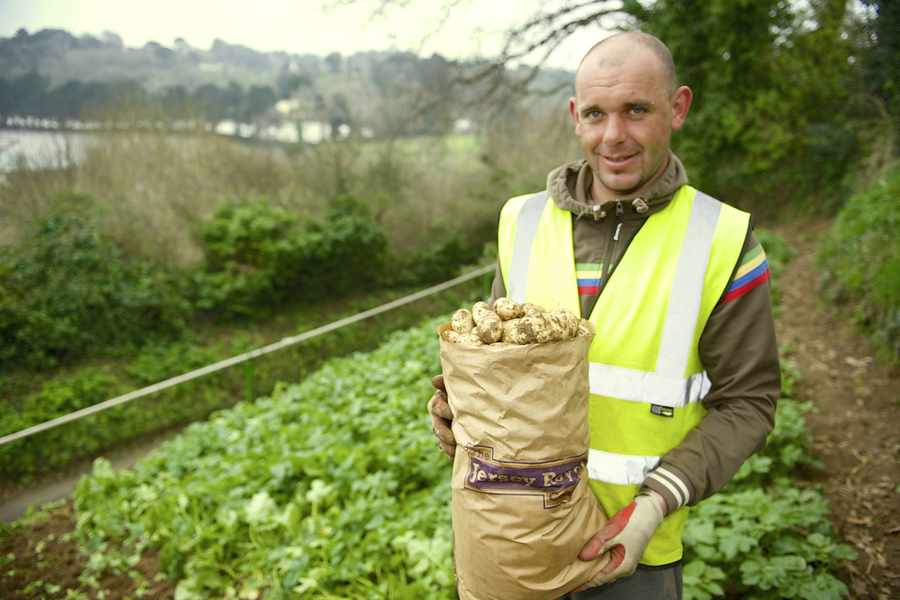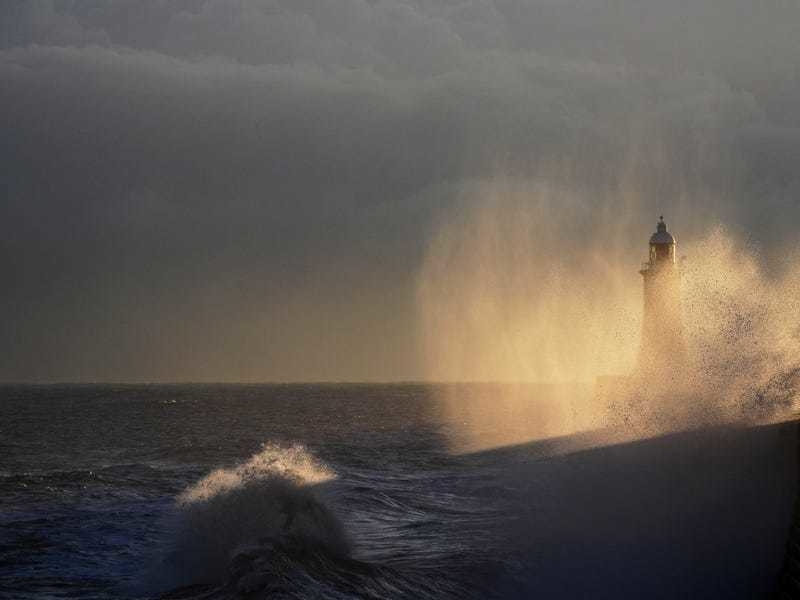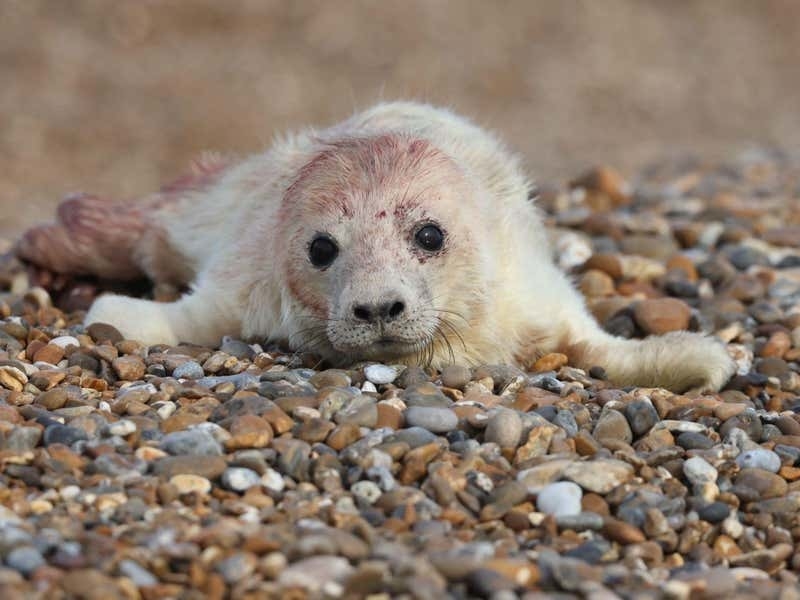Depending on this year’s harvest, between 30,000 to 40,000 tons of Jersey Royals are expected to be exported to the UK between now and July, however, those dug yesterday are destined for the local market and will be on sale from today.
St Martin farmer John Perchard won this year’s race to dig the first outdoor new potatoes in the whole of the British Isles, having planted the quarter vergée patch on 9 December 2014, covering it with a double layer of polythene to protect it against frost, just in case.
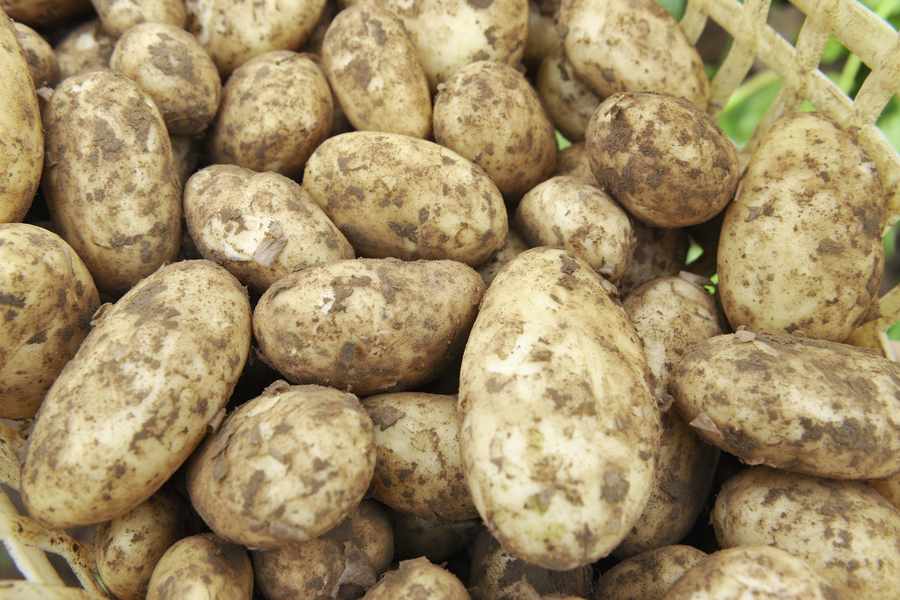
- The story goes that in 1878 a Jersey farmer called Hugh de la Haye bought two enormous potatoes from his local shop. He and his friends cut out the potato into 16 pieces and planted them in a côtil a steeply sloping field above Bellozanne valley. The following spring the crop was large and early. Most of the potatoes were round, but one plant produced only kidney shaped potatoes this came to be known as the Jersey Royal Fluke.
- Jersey Royals were first shipped to the UK in the 1880s.
- By the 1890s annual exports were reaching 60,000 tonnes.
- Today exports vary from 35,000 to 45,000 tonnes a year.
- They are one of the only varieties of potatoes that can be eaten both hot and cold.
”The field is very sheltered from the frost as it tends to stay in the trees above, it is almost like insulation,’ he said.
The Jersey Royal is the Island’s premier crop and has been grown in the Island for more that 130 years.
There is no mistaking the special taste of the Jersey Royal, which makes it unique among its many rivals – and that is down to the combination of perfect growing conditions, fertile soil, mild climate and expertise honed by generations of the Island’s old farming families.
William Church of the Jersey Royal Company said, while consumption of potatoes in general was down in the UK, the JerseyRoyal was still popular on the mainland.
‘The Jersey Royal still maintains its place in the market as supply and consumption remain static,’ he said.
The season begins in November with planting under glass.
The early crop is planted on the côtils (steep, sloping south-facing fields, mostly on the coast and in sheltered locations inland) from December, with the main outdoor crop going into the ground from January to April with harvesting from the end of March through to the July.
The peak of the season is May, when up to 1,500 tonnes of Royals can be exported daily.
The Jersey Royal is a premium, branded potato and the only fresh fruit or vegetable in the British Isles to enjoy EU Protected Designation of Origin status, similar to that enjoyed by other specifically local products such as Champagne, Camembert cheese and the Cornish pastie.
This means only new potatoes, grown according to local methods in the Island can be branded as Jersey Royals.
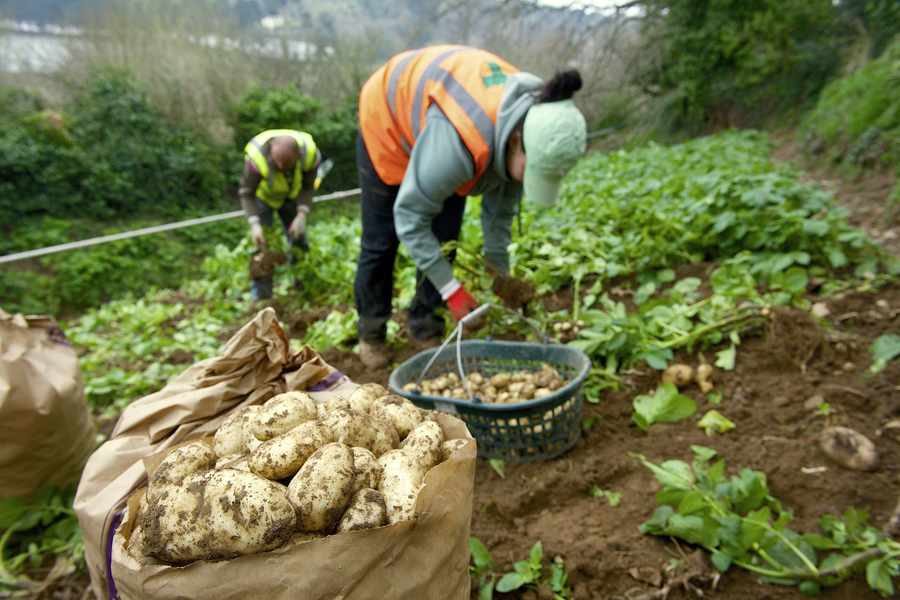
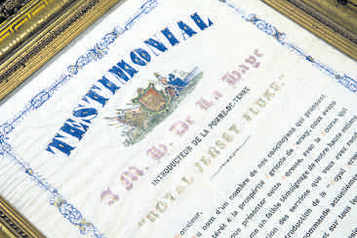
THE origins of the Jersey Royal can be traced back to farmer Hugh de la Haye, and there is a document that recognises his contribution to the industry.
In 2010, the Société Jersiaise had a chance to display a manuscript given to Mr de la Haye by fellow farmers in appreciation of the seed potato he produced in the 1880s.
Speaking at the time, the Société’s photographic archivist, Gareth Syvret, said that the tale of the first crop of Royals had gone down in Jersey folklore.
‘It’s a well documented story,’ he said. ‘At a supper with several farmers, Hugh de la Haye produced this amazing seed potato with 18 shoots. It was planted, and from that seed came this variety of kidney-shaped potatoes which we all recognise as Royals.’
The name Royal Jersey Fluke was apparently coined by Charles Le Feuvre, owner of newspaper La Nouvelle Chronique, after Hugh de la Haye had displayed some of his potatoes in the window of the office.
The manuscript shows that the farmers gave Mr de la Haye a ‘purse of money’ in gratitude for his discovery.
‘It’s a one-off potato and this manuscript is a testimonial to it,’ Mr Syvret said. ‘The essence of the document is that it’s a wonderful symbol of a twist in the history of Jersey agriculture.

- Jersey Royals are a good source of complex carbohydrates, which tend to be the bodys main provider of energy and are necessary for growth and development. Nutritionists recommend that complex carbohydrates should make up the bulk of our diet to ensure a healthy and balanced diet is maintained.
- They are also a great source of vitamin C, especially the skins. 100g of Jersey Royals provides you with 25% of the RDA for vitamin C.
- Vitamin B is also present in potatoes and is essential in allowing carbohydrates to function properly and fibre is abundant and important for keeping the digestive system healthy.
- 100 grams of Jersey Royals contain 80 calories.

